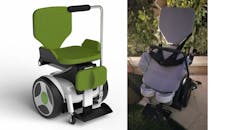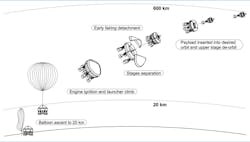Many years ago, I graduated from the Georgia Institute of Technology (Georgia Tech) and started working for RCA at the David Sarnoff Research Center in Princeton, N.J. (Fig. 1). New Jersey is actually home to quite a few research facilities, the best-known being Bell Labs.
1. David Sarnoff Research Center was my first job out of college. (Clarence Holbrook Carter, David Sarnoff Research Center, 1967. Oil on canvas. The David Sarnoff Collection/TCNJ)
RCA is no longer a force in the electronics industry it helped start, although it remains a brand name in the consumer electronics arena. Bell Labs and the Sarnoff Research Center have changed over time as companies have evolved, too. The Sarnoff Research Center is now part of SRI International that continues to do research and spin off companies. By the way, Bell Labs is not Nokia Bell Labs.
The 3DEXPERIENCE Lab is Dassault Systèmes’ research facility in Paris, France. There are additional facilities, such as one in Boston in conjunction with MIT.
Dassault Systèmes takes a slightly different approach, acting as an incubator for startups. The startup companies can apply for support. The technologies being used must address at least one of the following six themes: City, Life, Lifestyle, Internet of Things, Ideation, and Fablab.
One project from the lab comes via Gyrolift, a French mobility company (Fig. 2). The Gyrolift mobility platform uses the two-wheeled, balancing Segway approach to movement while adding a vertical component that allows users of this flexible wheelchair to rise above. They can look eye-to-eye with other people as well as providing the rider with access that would otherwise be more restrictive using a conventional wheelchair.
2. Gyrolift is a two-wheel chair that can lift the rider, providing a view unattainable with a conventional wheelchair.
The 3DEXPERIENCE platform allowed Gyrolift to develop its system more quickly using tools like CATIA Modeling, Systems Engineering, DYMOLA Systems Engineering, and the SIMULIA Structural Analysis feature. They team also took advantage of machine-learning tools to collect and analyze data to help develop the smart mobility features of the system. The Gyrolift sensors and algorithms are used to anticipate security maneuvers in case of imminent danger.
Another project is from Zero 2 Infinity. This company looks to open up space to those not part of megacompanies or nation states. They want to put up small satellites into low earth orbit (LEO) using Bloostar (Fig. 3). The company is also involved in utilizing balloons to lift payloads up to 30 to 40 kilometers above the earth. Balloons play a part in Bloostar as well.
3. Zero 2 Infinity’s Bloostar is designed to launch small satellites into low earth orbits.
Bloostar is designed to lower the price of launching satellites. The approach splits ascent into two phases: the first one aims to go through the densest parts of the atmosphere, and the second aims to gain speed in the near-vacuum environment. Bloostar rises to 20 km of altitude using a balloon. The Bloostar rocket then ignites its engines and can gain velocity and reach orbit with less constraint than a traditional rocket. It’s the first to use this type of stratospheric (quasi-vacuum) ignition.
These are just a few of the projects supported by Dassault Systèmes. Others include the Living Heart Project that’s now being used by leading heart researchers, and 3DVarius that’s now selling a line of 3D-printed electronic violins.






